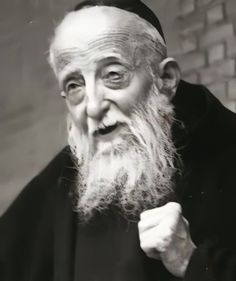Saint Leopold Mandic, that “little” great confessor
On Sunday 12 May 2024, while we were celebrating the solemnity of Pentecost there was also the liturgical memorial of St Leopold Mandic. One metre and thirty-five centimeters tall, St Leopold was one of the patrons of the 2015-2016 Jubilee of Mercy. His life story shows us how he welcomed everyone with great love in the convent of Santa Croce in Padua as countless numbers of penitents went for confession to him.
One of the people who knew St Leopold and remembered him well was Brother Barnaba Gabini. He said: The evening before his death, despite the torments of his illness, Father Leopoldo was still in the confessional welcoming the penitents. I was one of the last to enter his cell to confess, as I did every evening after dinner. Although speaking with great difficulty Brother Barnaba Gabini’s memory was still clear. This almost century-old Capuchin, a Friulian from Lestizza in Udine, precisely at the convent of Conegliano where he has lived some twelve years, Brother Barnaba was one of the last living witnesses to have known personally the humanity and meekness of Father Leopoldo Mandic, the little-great confessor of Dalmatian origin, beatified in 1976 by Paul VI and canonized by Pope St John Paul II in 1983. As we know, in the Jubilee of Mercy his remains were exhibited from 5 to 11 February 2016 in St Peter’s Basilica, in Rome, together with those of Padre Pio.
Brother Barnaba was a young novice when he met St Leopold for the first time at the end of the 1930s when he entered the convent of Santa Croce in Padua. He said: I remember that he addressed me as “toso”, that is, boy in dialect, and that it was he who encouraged me at the time of my profession with very few words. I never heard him complain about the illness that was consuming him. He was always in the confessional and there was a queue outside to confess to him. He welcomed everyone with an unconditional love. He was so well disposed towards those who asked the Lord for forgiveness that some of his brothers began to accuse him of giving absolution too easily. For this reason my superiors denied the seminarians the possibility of confessing to him.
The elderly Capuchin, who spent fifty years in Friuli before arriving in Conegliano in 2006, also reports a prophetic episode, witnessed during the process for the canonization of Father Mandic: One day a penitent from Padua, a friend of Father Leopoldo, found him in the throes of desperate crying. When he questioned him about what was happening to him, the saint revealed that that night he had had a horrible vision: the Lord had shown him Italy plunged into a sea of fire and blood. With these words Father Leopold was predicting the dramatic war events that would devastate Italy within few years later. The saint later also prophesied the bombing of the city of Padua, further specifying that the convent and the Capuchin church would also be hit, but the cell where he heard confessions would be miraculously saved. All this promptly came true on May 14, 1944, thus confirming the seer reputation of the little Dalmatian friar, who in the meantime had been dead for two years.
Father Giuseppe Ungaro, a Conventual Franciscan at the Friary and Novitiate Cloister at Basilica of Saint Anthony in Padua, had the grace of meeting six saints and pontiffs: Padre Pio, Father Massimiliano Kolbe, Pope Luciani, Pope John XXIII, Pope John Paul II, who were also his confessors. He also met Father Leopoldo in Padua. He said: He came every Wednesday to hear the confessions of the friars at the Saint. He often did it in dialect to put those in front of him at ease. First he went to pray in front of the tomb of Saint Anthony, something which he repeated at the end of the confessions. I remember that on the street the kids sometimes made fun of this very short religious figure (only one meter and 35 centimeters) and it made him suffer a little. He was so humble, then, that he was ashamed to be accompanied to the Saint in a car.
Regarding the size of his heart and the proverbial meekness of the Capuchin, Father Ungaro, biographer of Saint Leopold, recounts an episode in the life of the young Mandic which would explain the origin of his peculiar style as a confessor: At the age of eight he was made to kneel in the middle of the church as penance by a priest. And he promised himself that he would never behave like this if he became a priest. Furthermore, Father Ungaro added: His way of confessing was very similar to that of Padre Pio. Sometimes his merciful understanding was mistaken for laxity. One day he welcomed a believer to whom a confessor of the basilica had denied absolution. He sent him forgiven. And meeting, later, with that severe friar, he justified his different choice with a single sentence: “You, father, confess with your conscience; me with mine”.
Another time he replied: Am I too forgiving? Who was forgiving? It was the Lord who was the first to do so: it was not me who died for our sins but the Lord. How could he be more forgiving than this with the thief and the others?
O God, perfect unity and supreme good, you filled Saint Leopold, your priest, with kindness and mercy for sinners, and an ardent desire for unity among all Christians; grant that we through his intercession, may be renewed in spirit and heart so that we can spread your love to everyone and confidently work for the unity of all Christians in the bond of peace. We ask this through our Lord Jesus Christ, your Son, who lives and reigns with you and the Holy Spirit, one God, for ever and ever. Amen.
Fr Mario Attard OFM Cap





